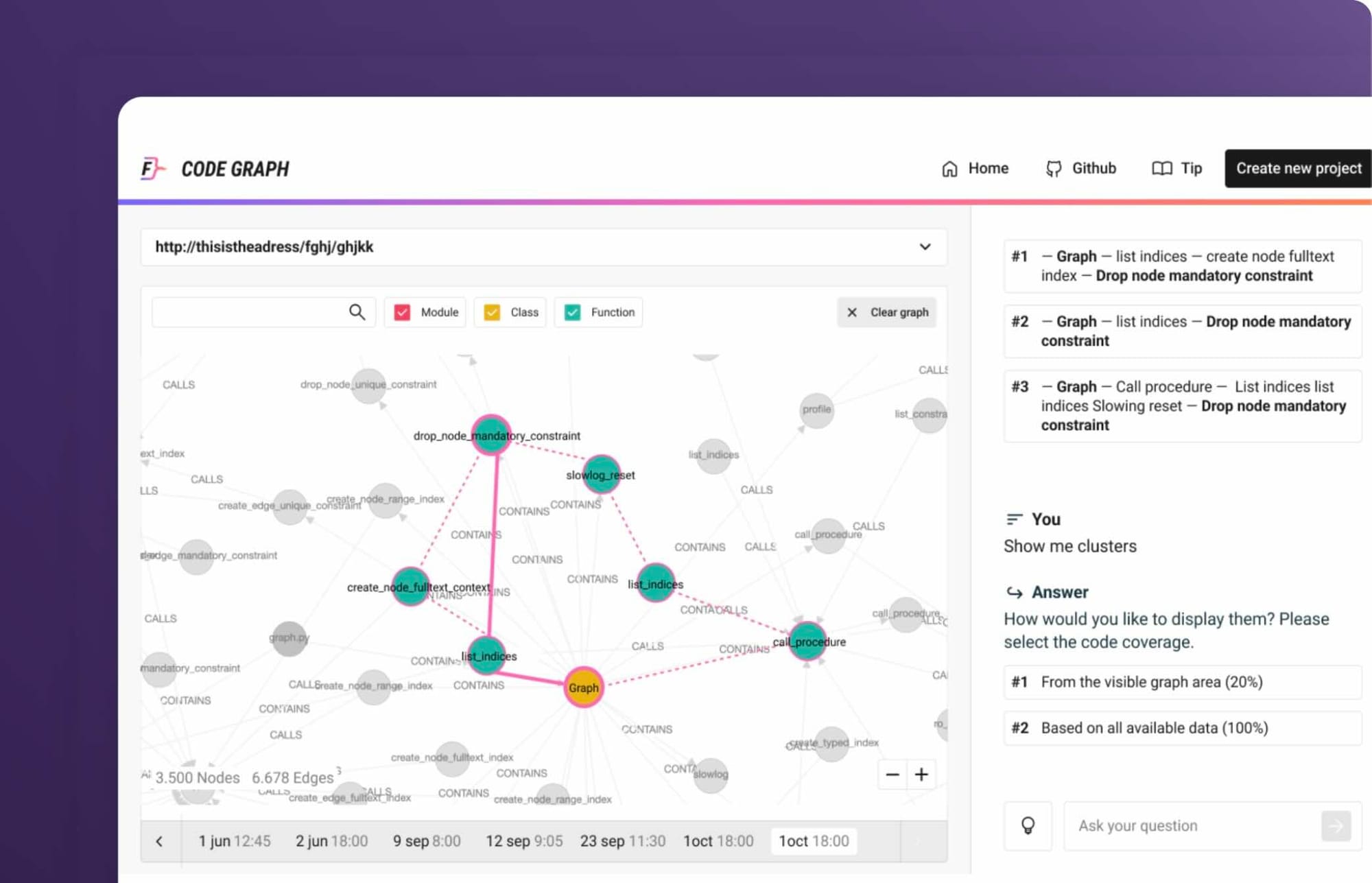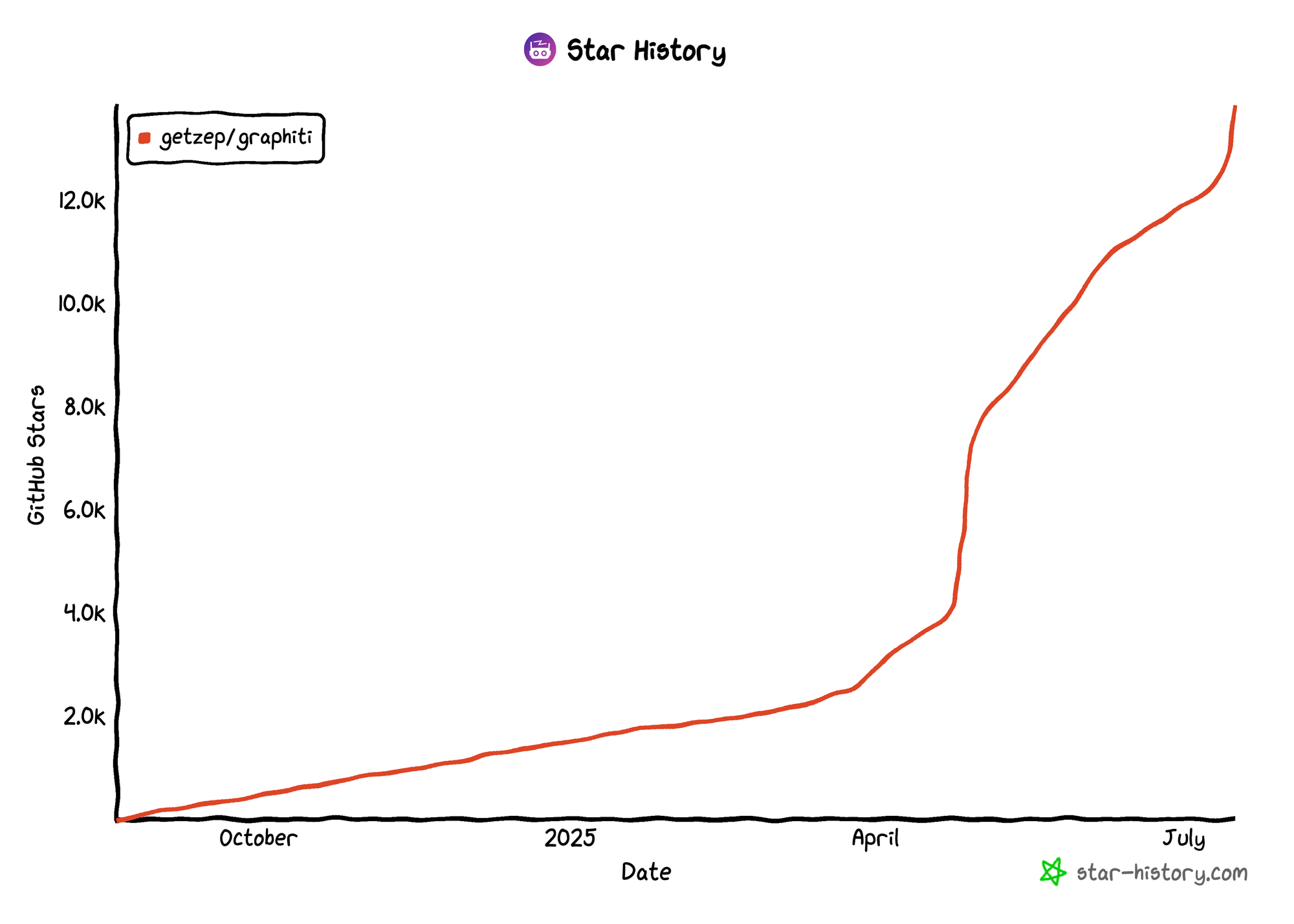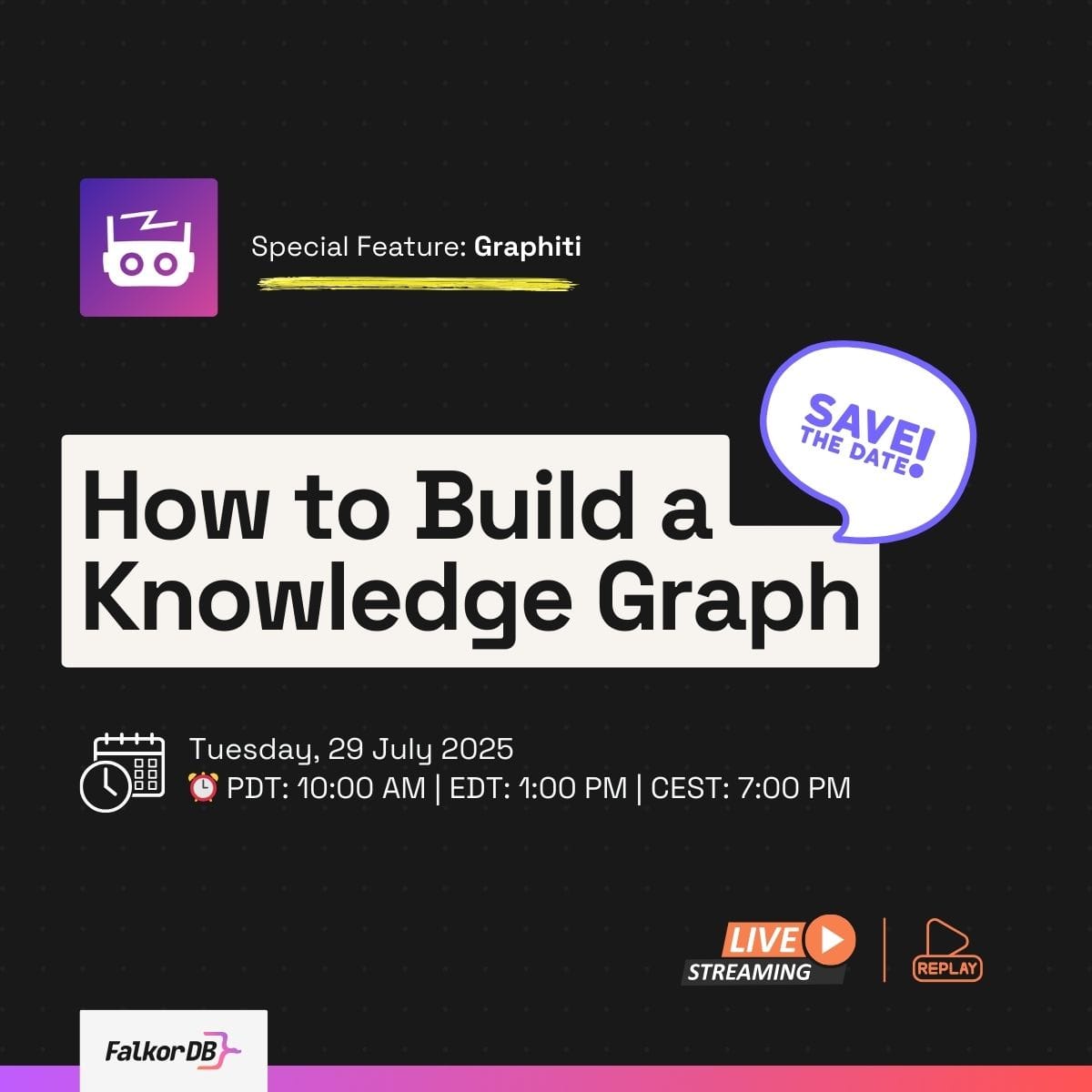Graphiti Adds FalkorDB Support as Project Approaches 14,000 Stars

The Graphiti community is hitting major milestones: nearly 14,000 GitHub stars in just eight months, with 35+ contributors and 25,000 weekly PyPI downloads. This growth reflects real developer adoption, much of it driven by the popularity of the Graphiti MCP server, which gives AI assistants powerful knowledge graph capabilities.
Graphiti is a framework for building knowledge graphs that update in real-time as new information arrives. Unlike GraphRAG, which processes documents in batches and creates static summaries, Graphiti continuously integrates new data into a time-aware queryable graph structure. This means your AI agents can reason about changing relationships and access current information without waiting for batch reprocessing.

Graphiti powers the core of Zep's memory layer for AI agents, where we've demonstrated state-of-the-art performance in agent memory benchmarks.
Today, we're announcing that FalkorDB has contributed native support for their graph database, giving developers a new backend option for building knowledge graphs with Graphiti.
Why FalkorDB Integration Matters
The FalkorDB team brings serious database expertise. Their founders previously built Redis Graph, so they understand high-performance data infrastructure. This partnership gives Graphiti users access to a database backend optimized for different use cases than traditional options.
According to FalkorDB's benchmarks, their database delivers 496x faster performance at P99 latency and 6x better memory efficiency. For developers building real-time AI agents that need sub-millisecond responses, these numbers translate to noticeably faster user experiences and lower infrastructure costs.
When FalkorDB Makes Sense for Your Project
FalkorDB works particularly well for applications that need:
Real-time AI agents where response latency directly impacts user experience. If your agent needs to query knowledge graphs during live conversations, those 496x latency improvements add up quickly.
High-frequency knowledge updates from streaming data sources. When your system processes thousands of updates per second, memory efficiency matters for both performance and cost.
Cost optimization scenarios where the 6x memory improvement translates to meaningful infrastructure savings, especially at scale.
The integration maintains the same Graphiti API you already know, so switching between database backends doesn't require application changes.
Getting Started with FalkorDB
Setting up Graphiti with FalkorDB takes three steps. See the Getting Started Guide for more details.
Install the package:
pip install graphiti-core[falkordb]
Configure your connection:
from graphiti_core import Graphiti
from graphiti_core.driver.falkordb_driver import FalkorDriver
# Connect to FalkorDB
driver = FalkorDriver(
host="localhost",
port=6379,
database="my_knowledge_graph"
)
graphiti = Graphiti(graph_driver=driver)
Set environment variables:
export FALKORDB_HOST=localhost
export FALKORDB_PORT=6379
export OPENAI_API_KEY=your_key
For on-premises FalkorDB installations, you can run the database locally with Docker:
docker run -p 6379:6379 -p 3000:3000 -it --rm falkordb/falkordb:latest
Community Growth by the Numbers
Graphiti's 14,000 GitHub stars represent genuine developer interest, but the usage statistics tell the real story. With 25,000 weekly PyPI downloads, teams are deploying Graphiti in production environments.
The Graphiti MCP server has been particularly popular, giving Claude, Cursor, and other AI assistants access to time-aware knowledge graph memory. This integration lets developers build AI applications that remember context across conversations and can reason about complex, evolving data relationships.
The 35+ contributors have submitted everything from bug fixes to major feature additions. Recent contributions include custom graph schemas, enhanced retrieval capabilities, and now the FalkorDB integration itself.

Join the Workshop
The FalkorDB team is hosting a workshop on July 29th: "How to Build a Knowledge Graph." The session focuses on building production knowledge graphs from both structured and unstructured data sources, featuring a sports-focused case study.
You can register at: https://lu.ma/0dtvw3ru
Schedule: July 29 | PDT: 10:00 AM | EDT: 1:00 PM | CEST: 7:00 PM
The workshop covers practical knowledge graph construction, data transformation techniques, and ontology concepts for ML infrastructure teams, backend developers, and AI engineers. I'll be participating and demonstrating Graphiti.
What This Means for Developers
The FalkorDB integration gives you options based on your performance requirements, deployment constraints, and cost considerations.
Your existing Graphiti code works without changes. The same API that processes episodes, builds knowledge graphs, and handles semantic search now supports multiple database backends. You can even test different backends in development to see which works best for your specific use case.
For teams already using Graphiti, this integration provides a path to optimize performance without rewriting applications. For new users, it means starting with the database backend that best fits your requirements from day one.
Graphiti's 25,000 weekly downloads and active contributor base suggest the project has moved beyond experimental use into production deployments. The FalkorDB integration, contributed by their team, shows how open-source collaboration can deliver meaningful performance improvements for the entire community.
Whether you're building AI agents that need millisecond response times or processing streaming knowledge updates at scale, you now have more options for building knowledge graphs that perform well in production environments.
Next Steps
- Try Graphiti with FalkorDB: Clone the quickstart example and run it locally in under 10 minutes with Docker
- Read the implementation guide: Check the complete documentation for API references, configuration options, and production deployment patterns
- Join the community: Get help and share feedback in the Zep Discord #Graphiti channel
Graphiti in action, courtesy of the Daily Dose of Data Science team.
